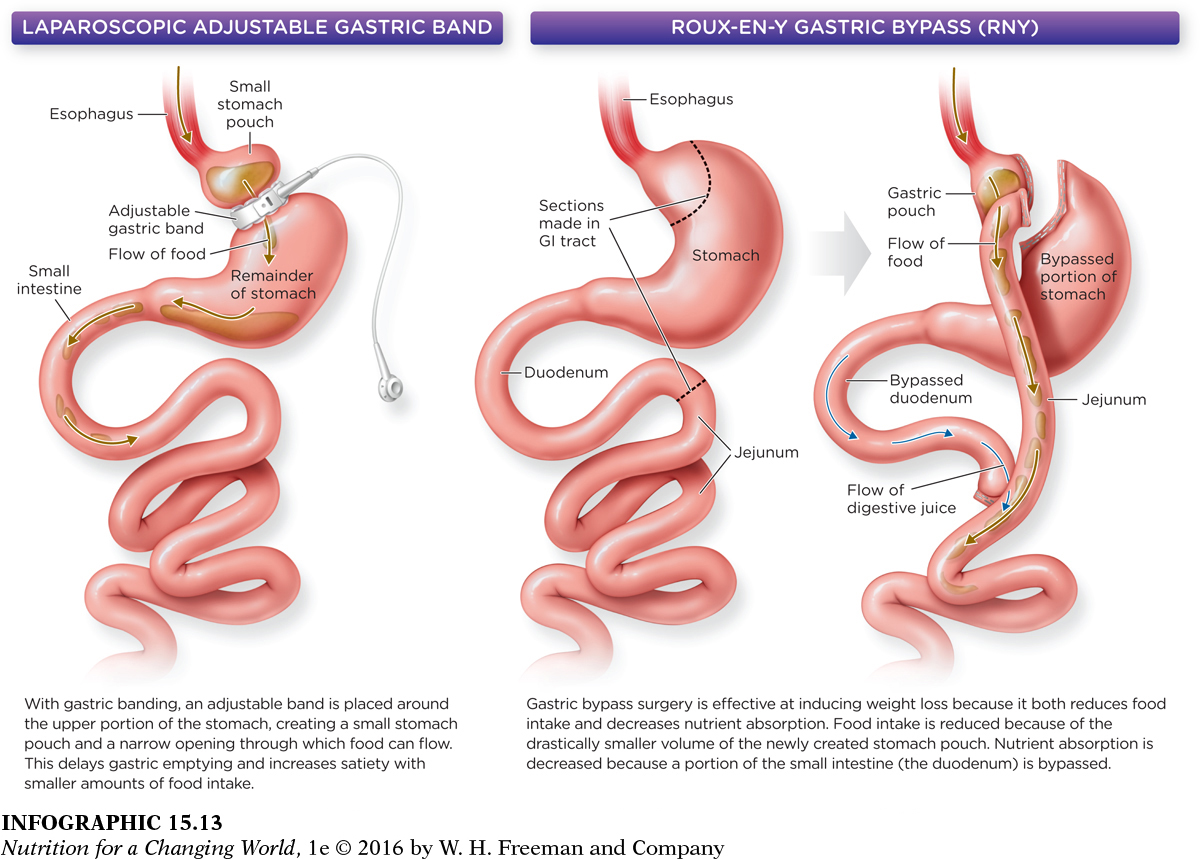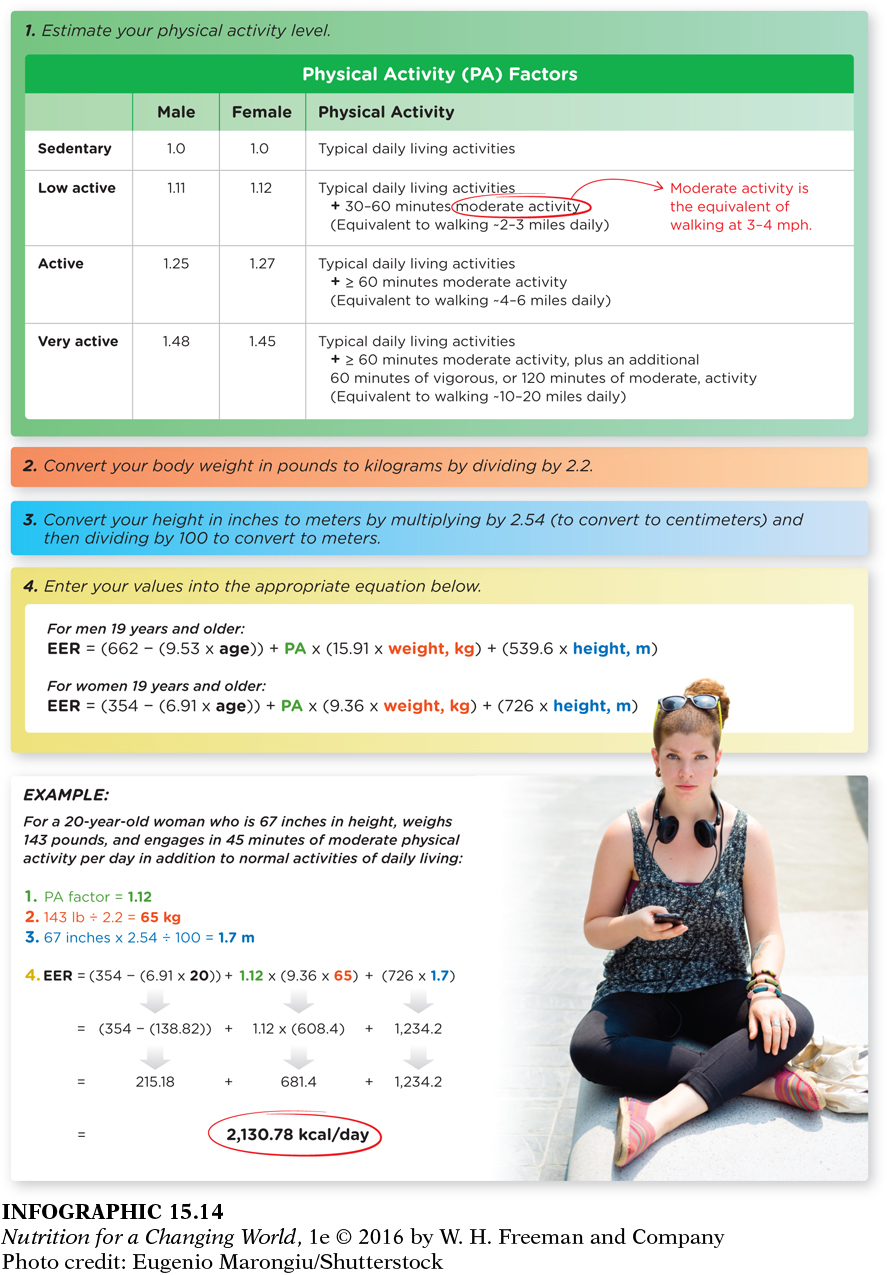WEIGHT LOSS RECOMMENDATIONS
Weight loss is recommended for anyone with a BMI of 30 or higher or those who are overweight and have two or more risk factors, or have a large waist circumference. Examples of risk factors include cardiovascular disease or a family history of it, smoking, hypertension, age (men: 45 years or older; women: 55 years or older, or postmenopausal), diabetes, and physical inactivity.
Surgical approaches to weight loss
Dietary modifications and increased physical activity are generally recommended to help people achieve and maintain a healthier body weight. But for very obese individuals, additional treatment options or interventions may be warranted. There are a few FDA approved antiobesity drugs that can be prescribed as an adjunct to diet, exercise, and behavior therapy for these individuals. For those with extreme obesity (BMI of 40 or above or a BMI of 35 or above with additional risk factors), weight loss surgery may be recommended. At present, in the case of extreme obesity, weight loss surgery (also known as bariatric surgery) is the most effective treatment to yield significant weight loss and reduction of weight-

Question 15.12
 Which one of these surgeries do you expect has the greatest potential to create problems in the future?
Which one of these surgeries do you expect has the greatest potential to create problems in the future?
Gastric bypass surgery has the potential to decrease nutrient absorption, causing health problems in the future.
Question 15.13
 Which one of these surgeries do you expect will result in the most rapid rate of weight loss? Explain your answer.
Which one of these surgeries do you expect will result in the most rapid rate of weight loss? Explain your answer.
Gastric bypass surgery would result in the most rapid weight loss because it reduces stomach capacity and impairs the absorption of nutrients.
A modest reduction in body weight can result in significant improvements in health for people who are overweight or obese. Losing 5% to 10% of body weight (and maintaining that lower weight) can reduce the risk of chronic diseases (cardiovascular disease and diabetes, for example) and premature all-
Dietary and lifestyle approaches to weight loss
For those with less severe weight problems, dietary and lifestyle approaches to weight loss may be enough. There are numerous dietary approaches to weight loss, as shown by the number of “diet” books published each year, magazine articles promising an end to the battle of the bulge, and advertisements for commercial weight-
Healthy weight loss plans maximize nutrient density while reducing calorie intake; increase physical activity; incorporate behavioral strategies to enhance compliance; address individual health concerns; and consider not only dropping pounds, but the maintenance of a lower body weight. One effective and healthful dietary approach seems to be a moderately low-

A common misconception about weight loss is that a person can simply reduce his or her food intake by a certain amount of calories and expect to lose a proportional amount of weight (assuming that a pound of fat contains approximately 3,500 kcal). For example, if a 700 kcal per day decrease in energy intake is made today, and that new lower-

Question 15.14
 Calculate your EER. How much would your EER change if you went up one physical activity level? How much would your EER change if you gained or lost 20 pounds?
Calculate your EER. How much would your EER change if you went up one physical activity level? How much would your EER change if you gained or lost 20 pounds?
Answers will vary depending on your body weight and activity level. Follow the formulas and the worked example in Infographic 15.14.
Weight-loss maintenance
The likelihood of regaining weight lost through any diet or program is well-